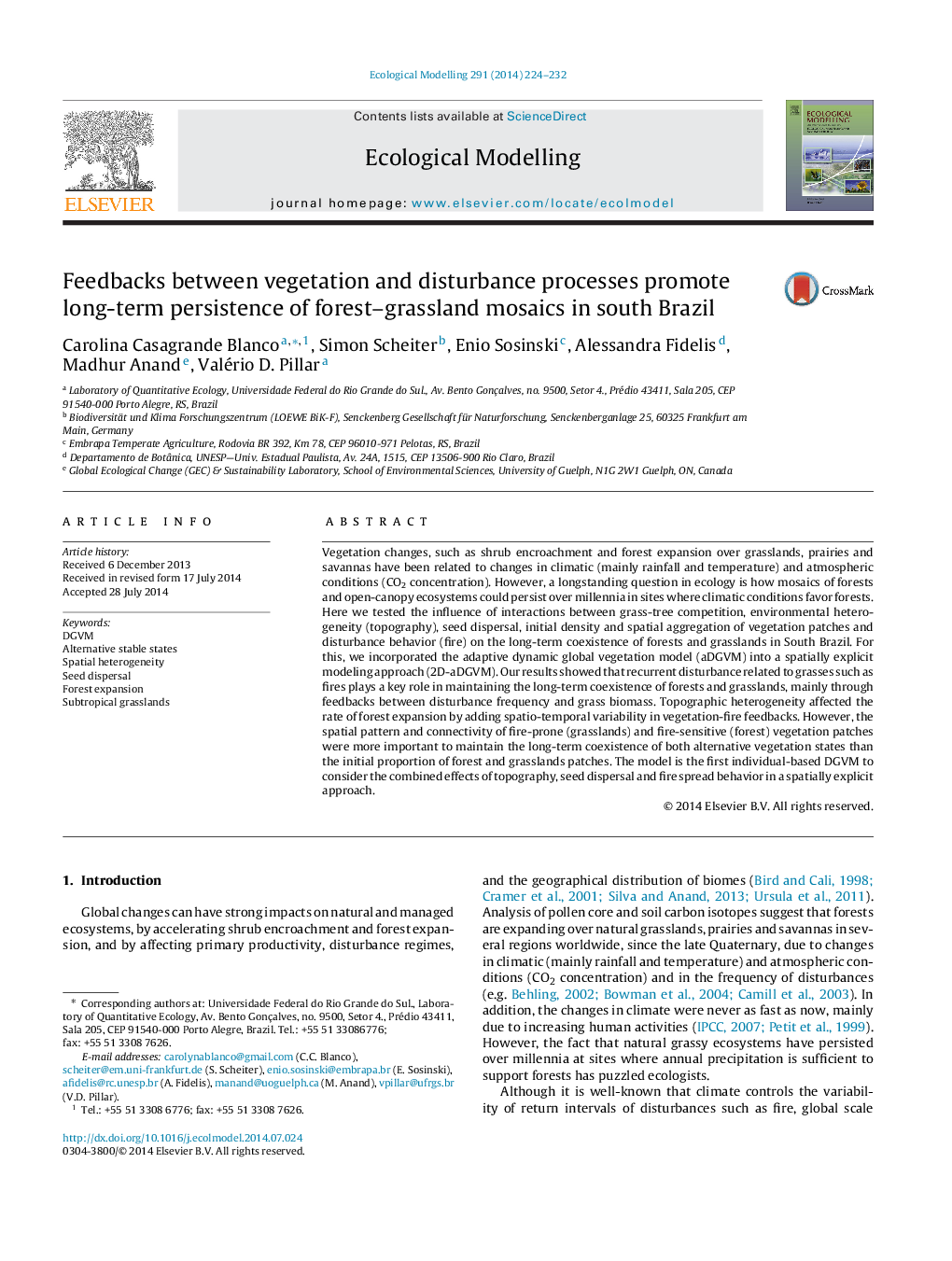| Article ID | Journal | Published Year | Pages | File Type |
|---|---|---|---|---|
| 6296775 | Ecological Modelling | 2014 | 9 Pages |
Abstract
Vegetation changes, such as shrub encroachment and forest expansion over grasslands, prairies and savannas have been related to changes in climatic (mainly rainfall and temperature) and atmospheric conditions (CO2 concentration). However, a longstanding question in ecology is how mosaics of forests and open-canopy ecosystems could persist over millennia in sites where climatic conditions favor forests. Here we tested the influence of interactions between grass-tree competition, environmental heterogeneity (topography), seed dispersal, initial density and spatial aggregation of vegetation patches and disturbance behavior (fire) on the long-term coexistence of forests and grasslands in South Brazil. For this, we incorporated the adaptive dynamic global vegetation model (aDGVM) into a spatially explicit modeling approach (2D-aDGVM). Our results showed that recurrent disturbance related to grasses such as fires plays a key role in maintaining the long-term coexistence of forests and grasslands, mainly through feedbacks between disturbance frequency and grass biomass. Topographic heterogeneity affected the rate of forest expansion by adding spatio-temporal variability in vegetation-fire feedbacks. However, the spatial pattern and connectivity of fire-prone (grasslands) and fire-sensitive (forest) vegetation patches were more important to maintain the long-term coexistence of both alternative vegetation states than the initial proportion of forest and grasslands patches. The model is the first individual-based DGVM to consider the combined effects of topography, seed dispersal and fire spread behavior in a spatially explicit approach.
Related Topics
Life Sciences
Agricultural and Biological Sciences
Ecology, Evolution, Behavior and Systematics
Authors
Carolina Casagrande Blanco, Simon Scheiter, Enio Sosinski, Alessandra Fidelis, Madhur Anand, Valério D. Pillar,
